Roland Mouret and Dragana Jurisic are having a love-in. We're sitting in the members' room at the Royal Hibernian Academy, and the fashion designer and artist have been bonding over their forthcoming project, inaugurating a new series of collaborations under the banner RHA X.
Sometimes when highly creative people meet, insecurities lead to one-upmanship, or cold-shouldering. Not so with this pair: they’re clearly delighted with one another, and with the project. “This is the first time in my life that I’m using my creative mind purely as a creative and not a fashion designer,” says Mouret.
The project, which takes over the RHA’s Dublin base later this month, will see the pair making a space for the audience to interact with them, one on one, on the first, gala night, and subsequently with performance artists. There will, I understand, be questions, and answers. The aesthetic will be “sparse but beautiful”; beyond that, they are both deliberately vague. “It is very difficult to talk about it without telling you what it is,” says Mouret, in his deliciously rich French accent.
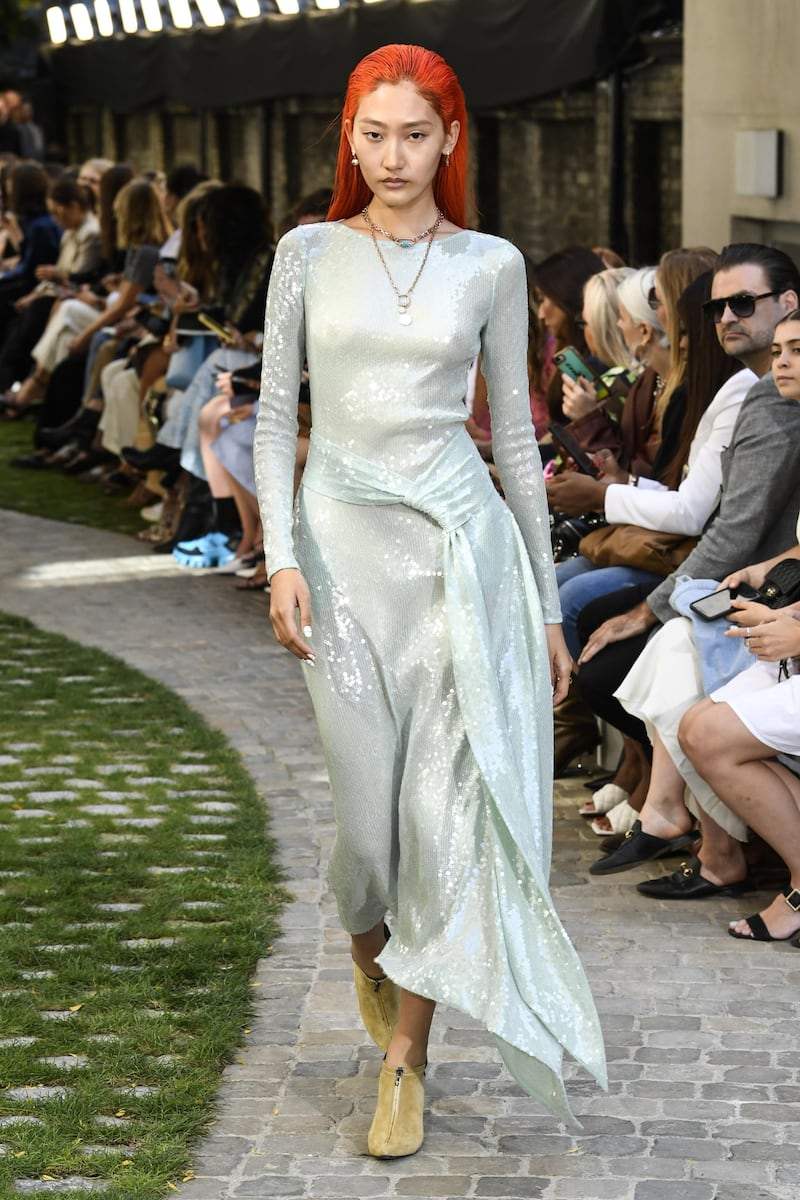
I try to tell him that that’s the point, but he sidesteps the question. In fact, it’s difficult to pin him down on many topics, as his expansive conversation slides around themes, latches on to tangents, and brings you along for the ride. It helps that he’s beguilingly gorgeous, with dark brown eyes and a huge, impish smile. Strands of his short, grey-flecked dark hair stand up when he runs his fingers through it, which he does throughout our conversation and, when he makes eye contact, which is frequently, he is completely charming. He has also admitted to a wild temper, with the excuse and reason: “I am French”.
Born in Lourdes, and now based in England, the designer shot to fame in 2005, when his square-necked, figure hugging Galaxy Dress became the frock du jour for everyone from Jodie Foster to Cameron Diaz, and Victoria Beckham to Dita von Teese. Having spent just three months at a Parisian fashion school, Mouret says he learned about form, folding and cutting from watching his butcher father at work.
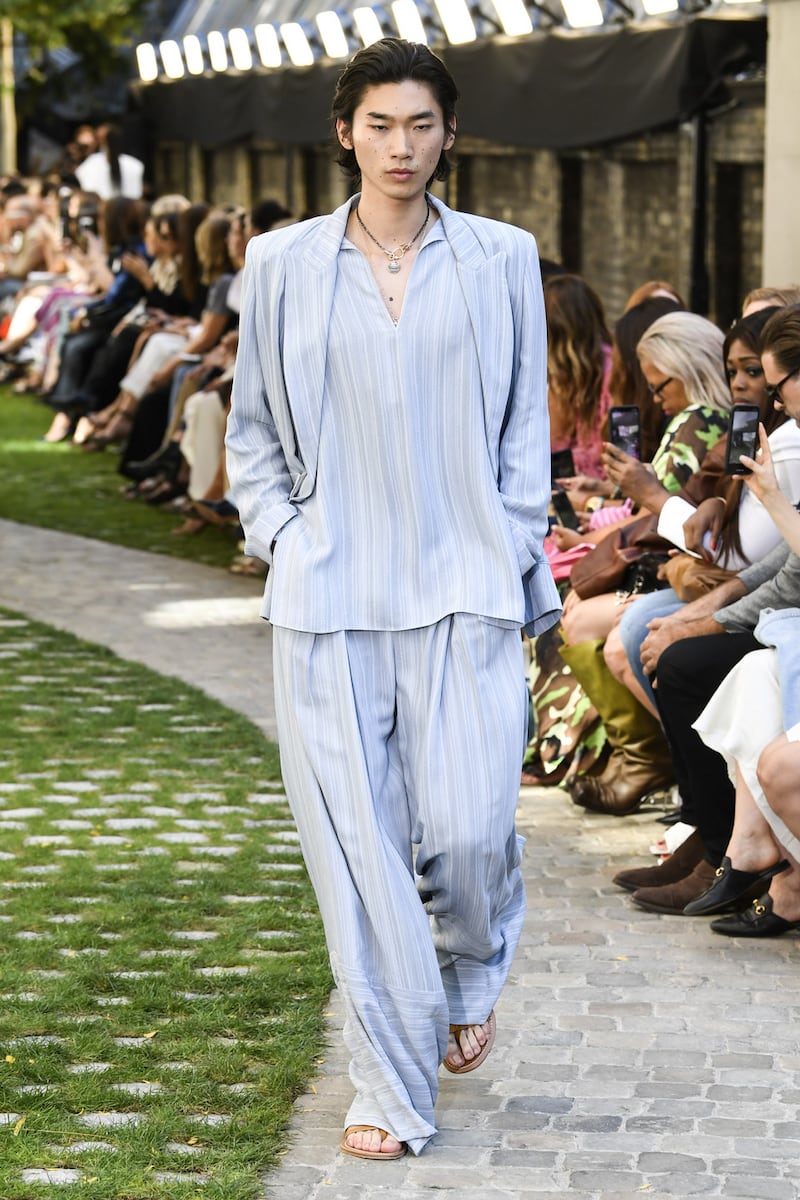
Defying expectations that he would follow his father into the business, he instead went to Paris, and styled himself outside a club, under a streetlamp, wearing a self-made blue suit, kind of like a zazou, he says, referring to the French second World War subculture that used style to stand out from the austerity of the Vichy regime. “Every time the door opened, I was lighting a cigarette. I was a poser and I got invited in.”
He worked as a model, stylist and art director, before eventually turning to design. “I knew it would be something with fabric and fashion,” he says. “I didn’t know it would pay the bills, but there is a moment when, if you don’t try, you can see what you’re going to become, and it’s not nice. You become a bitter person. That reality obliges you to try.”
What was Lourdes like, I wonder, thinking about the stream of Irish pilgrims flocking to the religious shrine, seeking miracles and cures. Did it have an effect on him? “It did, I reject my religion,” he says, explaining his antipathy to Church control. “But there is faith, and people believing in something that is divine, that gives you... I’m not religious, but that mind is part of who I am as a person.”
A self-confessed control freak, what drives him is the desire to be creatively free. “I will be all the time outside the box,” he says. “That is what we try to present here,” he continues, returning to the RHA project. “It is a reflection of that sense of who we are – it’s opening that door and going for it. Of course I shit myself,” he explains his sense of creative risk, which sounds a lot less earthy in a French accent. “But I’m so excited. There is no blueprint. So I said yes... The moment I know we’re going out of the box, I will do it.”
Art and fashion collaborations have a pretty poor history, often reduced to some artist’s prints on someone else’s fabrics, but this is different. “I think we’re living in a world where art is so important in a whole way of thinking, of defining ourselves. What I’ve done here is accepted to have an artistic experience that is nothing related to fashion.”
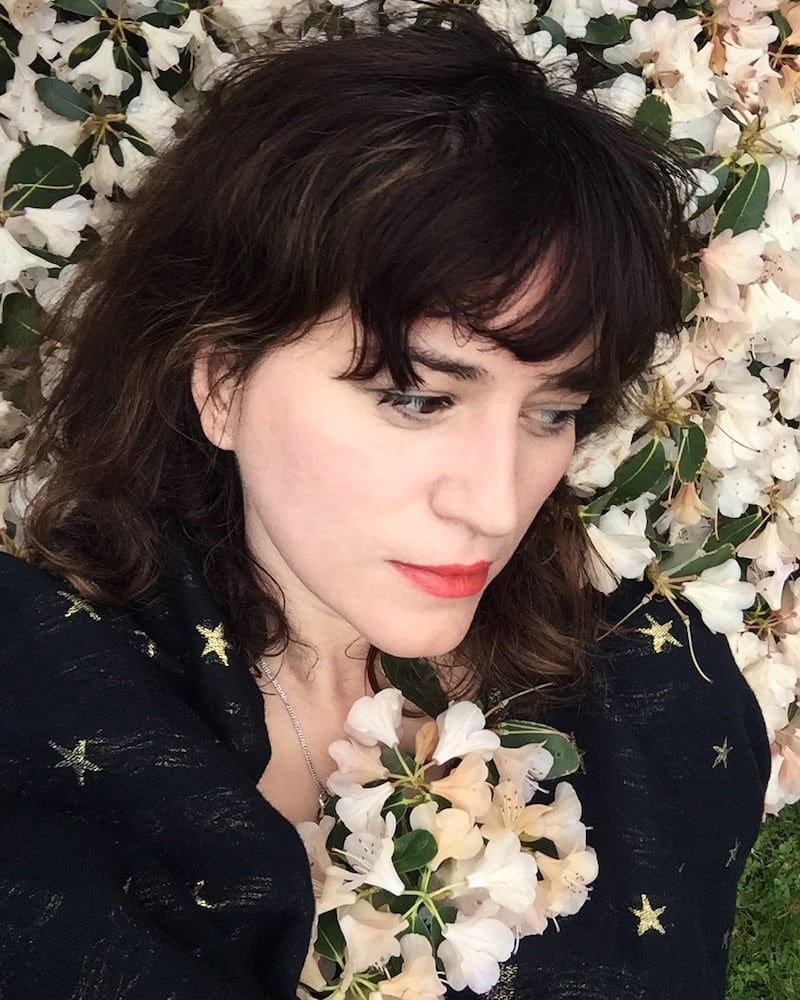
He returns to his fear of being trapped in a box. “Every time I make a collection and show it, it’s to show I’m coming out of my box,” he says. His latest collection, for Spring Summer 2020 is a world away from the waist-clasping Galaxy. There are lose folds, drapes, something to suit all shapes and sizes, deliberately escaping definition. But what the designer is most proud of is the hangers the clothes will rest on. Developed with Arch & Hook, they are made of eighty per cent recycled marine plastic. “We have found one of the biggest solutions of our future,” he says, with excitement.
Apart from a dramatic creativity, he and Jurisic also share a sense of being outsiders: Mouret, as a Frenchman living in a restored cottage in Suffolk, which he shares with his husband, the English sculptor James Webster, and their Jack Russell, Dave; and the award winning artist having grown up in the former Yugoslavia, before basing herself in Dublin.
“I love to be the outsider,” he says. “You have to have the sense of honesty, why you’re doing it. Is it the dream of ego? I don’t need to feed my ego. If I’m not the number one of the fashion industry, who cares? My message is really personal, and I’m in synch with myself.”
Some of Mouret’s words flow over me like a stream of consciousness. He loves bees. Ireland smells different, it’s something in the air, like the Pyrenees. Irish people are like family to work with. Fabric is an ally as well as the final step in our identity. Heavy boots cause lightness – when you take them off. Non sex is a sexuality. He’s a pessimist, but has huge empathy, and really wants to believe people are amazing and good. Sometimes he just needs to be left alone. All in all, it’s hard to pin him down, and I get the sense he wins a lot of arguments because, following him, you tend to forget your own point.
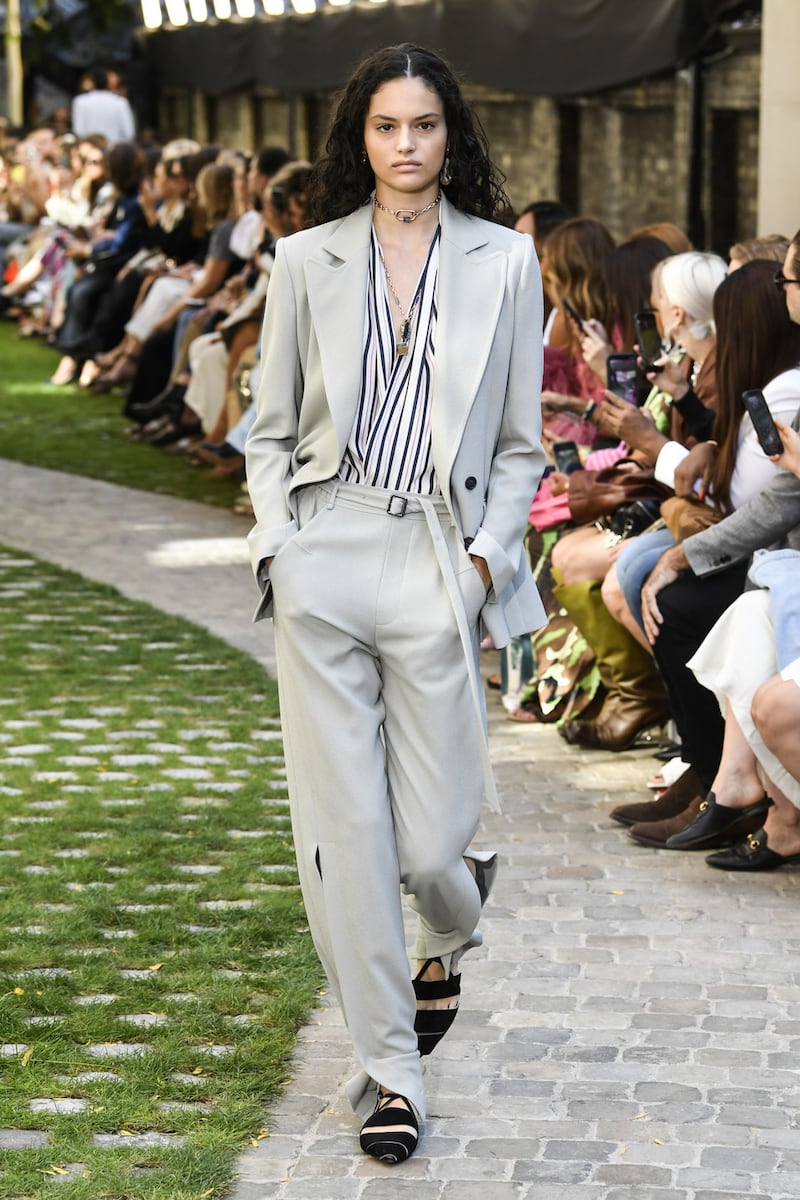
But he is also seriously committed to making change in the world. In the 1980s and 1990s he was involved with ACT UP, the action group promoting Aids awareness and advocacy. There were street protests, because “you know all your friends could just die in the moment”. Then came the Red Hot + Blue Albums. Mouret recalls Sinead O’Connor singing Cole Porter’s You Do Something to Me, “singing acapella. It was one of the moments of you feeling alive, because there is a voice… It was powerful.” It was a kind of honesty, he says, that obliges you not to try to be someone else. Today he is a Patron of the Maggie’s Centres for Cancer support.
After some more chat about bees and sustainability, we return to the project at hand. It is, he says, about being known and seen. “It’s a questioning of why now, why us, why at that moment, where here. It’s a strong collaboration. We’re questioning our political time, we’re questioning our decisions, we’re questioning that it’s so much easier to blame someone else than ourselves.” And that’s as close as I get.
But I advise you to go. Dragana Jurisic’s work is haunting, and Roland Mouret is a one-off; and, if nothing else, just having his words wash over you is like being swathed in a delicious fabric.
Do you think experiences can inspire change? I ask as a final question. “I come from Lourdes,” he says. “That is my only answer.”
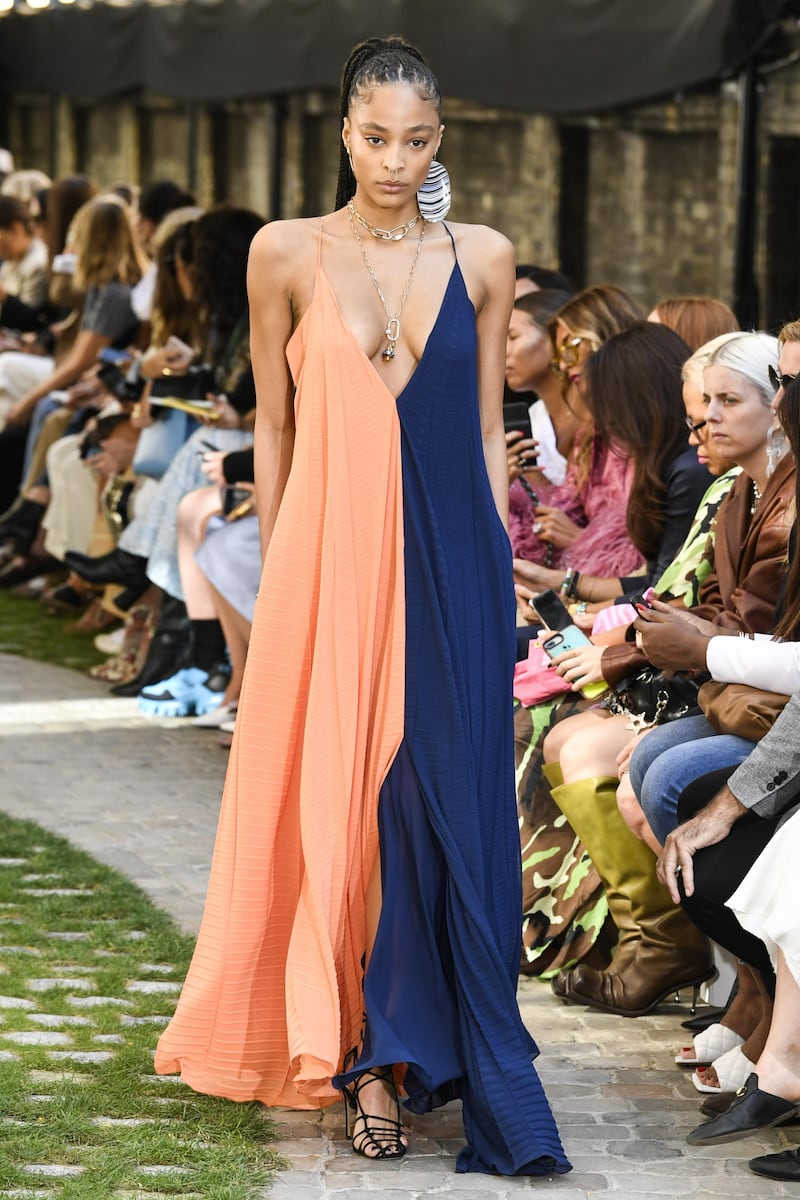
RHA X is at the Royal Hibernian Academy from Friday, November 15th, to Sunday, November 17th. Tickets for the gala launch party with Roland Mouret and Dragana Jurisic cost €125. Tickets for the designer and artist in conversation on Saturday, November 16th, cost €10



















